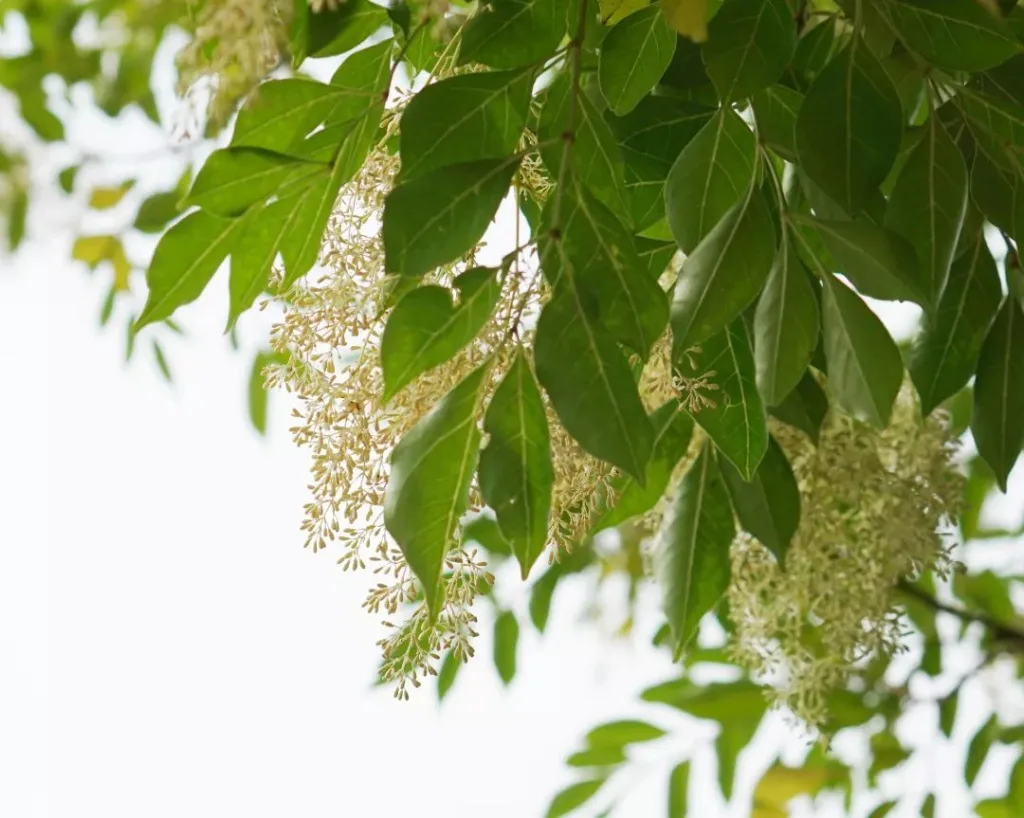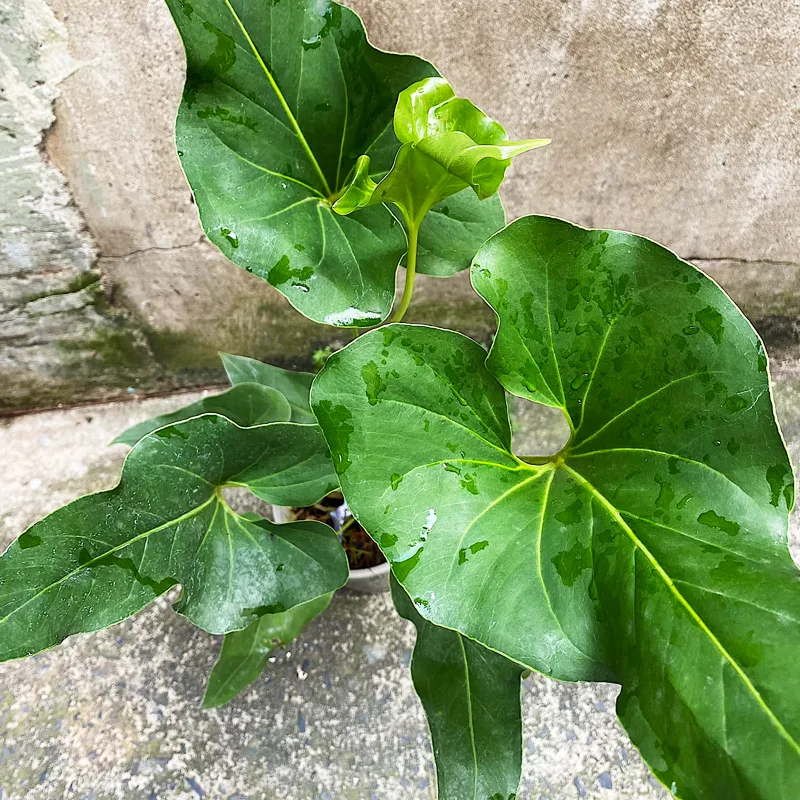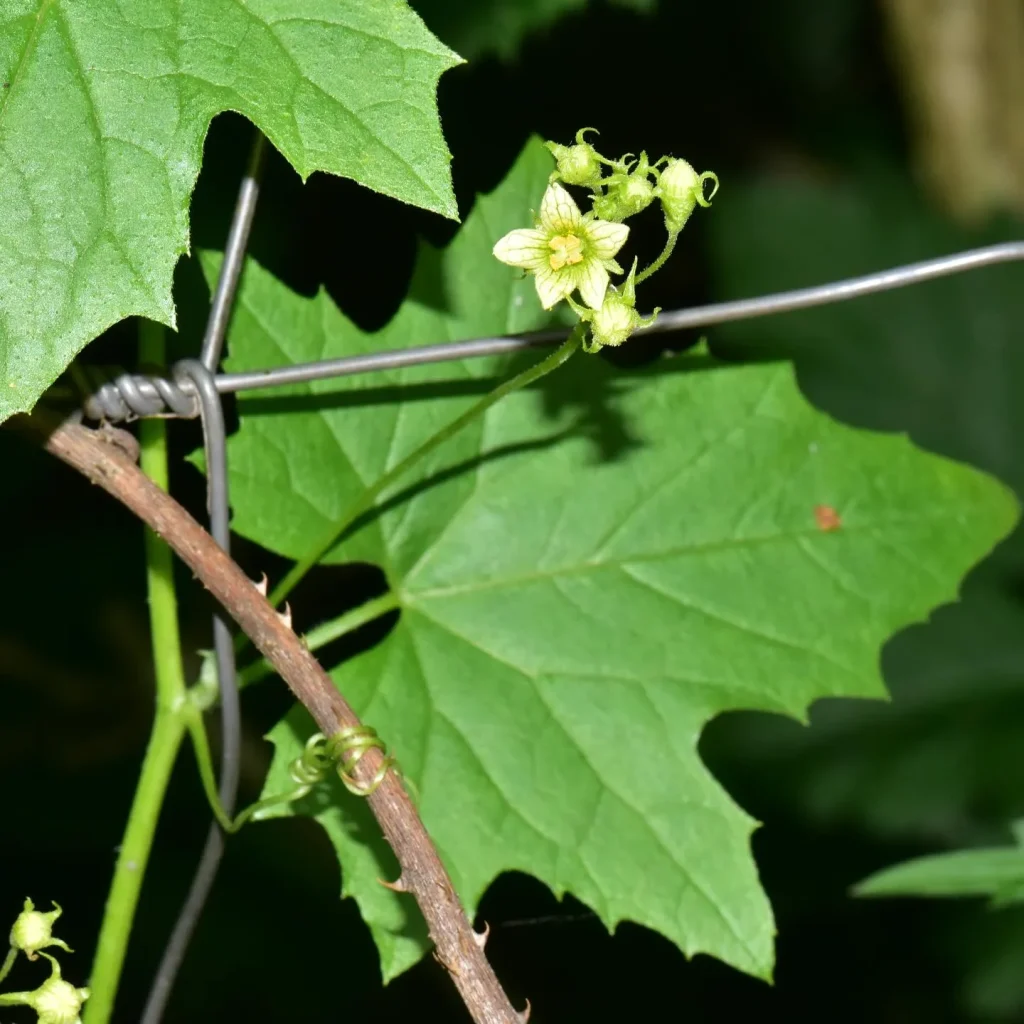
Is portulaca a perennial?
In most gardening guides, portulaca gets labeled as an annual. They’re right in a way – I plant them every spring, and by fall they’re toast. But here’s the thing: those cheerful little flowers are prolific self-seeders! Every year, I find a bunch of portulaca seedlings popping up in the most unexpected places. It’s like they play hide-and-seek in the garden over winter. It’s a bit of a gamble, but I love the surprise of seeing their bright faces reappear come springtime. Makes me feel like they’re volunteering to bring some sunshine to my flower beds!
Do deer eat portulaca?
Luckily, my portulaca seems to be completely off the menu for the local deer. I’ve never seen them even give it a sniff! Maybe it’s the thick, fleshy leaves – they don’t look like the juiciest greens on the block. This is a huge relief, because those little flowers put on such a stunning show all summer long. I wouldn’t want some hungry deer ruining the party!
Is portulaca edible?
You won’t believe this! Portulaca turns out to be a sneaky superfood hiding in plain sight. I always thought of it as purely ornamental, but then I read somewhere that it’s actually a popular edible plant in many cultures. Curiosity got the better of me, and let me tell you, I was pleasantly surprised! The leaves have a lovely, slightly peppery flavor, kind of like a milder watercress. I tried them both chopped raw in a salad and sauteed with some garlic and olive oil. Both ways were delicious! Now I’m looking up all sorts of recipes to incorporate this little powerhouse into my meals. Definitely going to try those purslane burgers I saw online!
Is portulaca poisonous to dogs?
Oh boy, this is where the sunshine turns to storm clouds! Those same lovely portulaca plants that are a feast for my eyes and taste buds turn out to be a big no-no for my furry friend. Apparently, portulaca contains something called soluble calcium oxalates, which can be really harmful to dogs. If they munch on those pretty flowers, it can lead to some serious problems like kidney failure. Yikes! Knowing how curious (and sometimes mischievous) my dog can be, I had to be extra vigilant about keeping him away from the portulaca this year. Totally worth it though, to keep that wagging tail safe and healthy!
What to plant with portulaca in a container?
Portulaca loves to bask in the sunshine and thrives on neglect, so when it comes to container companions, I look for plants that enjoy the same conditions. Here’s what’s worked wonders for me:
- Thrillers withspiller appeal: For a dramatic touch, I love to plant something tall and eye-catching in the center. Think feathery plumes of ornamental grasses like maiden grass or a vibrant upright zinnia. Then, let the portulaca spill over the sides of the container, creating a cascade of colorful blooms.
- Sun-loving succulents: Succulents like sedum and echeveria are a perfect match. Their plump, architectural shapes add a nice contrast to portulaca’s delicate flowers, and they both require minimal watering. It’s a low-maintenance dream team!
- Trailing vining friends: If you have a hanging basket or a tall container, letting trailing portulaca varieties share the space with sweet potato vine or even a calibrachoa creates a stunning display. The cascading vines weave between the portulaca blooms, adding another layer of texture and color.
How to care for portulaca?
Portulaca might be my new favorite flower, but let me tell you, they’re not high-maintenance divas! Here’s what I’ve learned keeps them thriving and blooming all summer long:
- Sunshine, glorious sunshine! Plant them in a spot that gets at least 6-8 hours of direct sunlight a day. The more sun, the happier those blooms seem to be.
- Forget the watering can: These little troopers are drought-tolerant champs. I only water them deeply when the soil feels completely dry to the touch. Overwatering is the enemy here – it can lead to sad, mushy plants.
- Think sandy soil: Portulaca isn’t a fan of heavy, soggy soil. When planting, use a well-draining potting mix or add some sand to your regular potting soil for extra drainage.
- Deadheading? Nah: Unlike some other flowering plants, portulaca is a self-cleaning machine. The spent blooms fall off on their own, so you don’t have to worry about deadheading. But if you want to keep the plant looking extra tidy, you can snip off the occasional faded flower.
- A little fertilizer goes a long way: I don’t go overboard, but a light feeding every few weeks with a balanced fertilizer keeps the blooms coming.
With a little sunshine and neglect, your portulaca will reward you with a dazzling display of color all season long!
How to propagate portulaca?
Portulaca is surprisingly easy to propagate from cuttings, which means I can multiply my sunshine friends for free! Here’s my secret weapon for more blooms:
- Snip, snip, snip! I use sharp pruners to take stem cuttings that are about 2-4 inches long. Make sure each cutting has at least one node (that little bump on the stem where new growth appears).
- Strip and prep: I remove the lower leaves from the cutting, leaving just the top leaves intact. This helps prevent them from rotting in the soil.
- Potting party: I fill a pot with a well-draining potting mix and make a small hole in the center with my finger. Then, I gently insert the cutting into the hole, making sure at least one node is buried in the soil.
- Water wisely: I give the pot a good watering to settle the soil, but then I go easy on the watering can. Keeping the soil slightly moist, not soggy, is key.
- Patience is a virtue: It takes a couple of weeks for the cuttings to root, so I play the waiting game. I usually place the pot in a warm, brightly lit spot (indirect sunlight is best) and mist the leaves occasionally to keep them from drying out.
- New life blooms! Once the cuttings sprout new leaves and start growing, I know they’ve rooted successfully. Then, I can harden them off by gradually introducing them to more direct sunlight before transplanting them to their final sunny destination.
Propagating portulaca is a fun and rewarding way to get even more bang for your buck (or seed packet, in this case!). It’s like having a built-in flower factory right on my windowsill!
Is portulaca deer resistant?
You bet! My portulaca plants seem to be completely deer-proof. I’ve never seen any nibble marks or chewed-up flowers. Maybe the deer find the thick, fleshy leaves unappetizing. This is a huge plus for me since those little blossoms put on such a dazzling show throughout summer. No hungry deer means more blooms to enjoy all season long!
Can portulaca be grown indoors?
Portulaca can be a bit finicky indoors, but I’ve had some success with it! It all depends on mimicking their happy place – a sunny, warm environment. Here’s what’s worked for me:
- Sun’s the key: Forget about shady corners. Portulaca needs at least 6-8 hours of bright, direct sunlight indoors. A south-facing window is ideal. If natural light is limited, supplement with grow lights to keep those blooms happy.
- Mimic outdoor warmth: They love hot and dry conditions. I keep the room temperature on the warmer side, ideally around 70-80°F (21-27°C). Avoid cold drafts or placing them near air conditioners.
- Drainage is essential: Just like outdoors, overwatering is their enemy. Use pots with drainage holes and a well-draining cactus or succulent mix. Let the soil dry completely between waterings.
- Be prepared for leggy growth: Since they crave strong sunlight, portulaca grown indoors might get leggy and stretched out if they don’t get enough light. You can pinch off leggy stems to encourage bushier growth, but be aware that flowering might be less prolific indoors.
Overall, portulaca can be a bit of a challenge indoors, but with the right placement and care, you might be rewarded with some sunshine-colored blooms to brighten your home. Just be prepared to give them some extra TLC compared to when they’re basking outdoors.
Does portulaca spread?
Absolutely, portulaca is a spreader! They might be little bundles of sunshine, but they’re also sneaky expanders in the garden. Here’s what I’ve observed:
- Trailing tendencies: Most portulaca varieties have a trailing, spreading habit. Their stems cascade outwards as they grow, forming a dense mat of colorful blooms that can reach up to two feet wide!
- Self-seeding surprise: Portulaca is a champion self-seeder. Those pretty little flowers produce tiny seeds that readily drop and germinate throughout the garden. Come next spring, you might find surprise portulaca volunteers popping up in the most unexpected places.
- Contained spreading is possible: While portulaca will naturally spread, it doesn’t go wild. Planting them in containers or raised beds helps control their spread and keeps them from taking over your flower beds. You can also trim back any straying stems if they start overflowing their designated area.
Overall, portulaca’s spreading habit is more of a charming quirk than a nuisance. It just means more sunshine-colored cheer throughout your garden! Just be prepared to enjoy them in unexpected places, or give them some gentle boundaries if needed.
How long do portulaca flowers last?
Individual portulaca flowers themselves aren’t the longest-lasting blooms, but that’s where the magic of continuous blooming comes in! Here’s the breakdown from my experience:
- A single flower’s show: Each individual portulaca bloom is a bit of a one-day wonder. They open up glorious and vibrant in the morning sunshine, but by nightfall, they’ll start to wilt and close up.
- The beauty of continuous bloom: The good news is, portulaca plants are constantly putting out new flower buds. So, even though yesterday’s blooms might be fading, there are always fresh ones waiting to take center stage. This continuous blooming cycle can last for weeks, if not months, throughout the summer and into early fall.
- Deadheading not required: Because those spent blooms fall off on their own, you don’t even need to deadhead (remove dead flowers) to encourage new blooms. The plant does all the cleaning up itself!
So, while each flower might be short-lived, the overall flowering season for portulaca is a long and dazzling display. They’re like little blooming machines, putting out a constant stream of sunshine-colored cheer!
How to deadhead portulaca?
The good news is, you actually don’t necessarily need to deadhead portulaca! Unlike many other flowering plants, these little troopers are self-cleaning champions.
Here’s why deadheading isn’t a must for portulaca:
- Natural bloom cycle: Those beautiful blooms open in the morning sunshine and then fade by evening. But fear not! The plant constantly produces new flower buds, so there’s always a fresh wave of color ready to take over.
- Self-cleaning magic: As the flowers fade, they detach from the plant on their own. This natural process eliminates the need for you to manually remove spent blooms.
However, if you prefer a tidier look in your container or garden bed, you can still give deadheading a try:
- Pinch and remove: Simply pinch off the faded flower where the stem meets the main body of the plant.
- Minimal effort required: There’s no need for fancy tools or precision cuts. A gentle pinch with your fingers will do the trick.
Overall, deadheading portulaca is entirely optional. The plant does a pretty good job of taking care of things itself. But if you enjoy a meticulously groomed look, feel free to give those faded blooms a little pinch!
How to make portulaca bushy?
Since I’ve had great success with keeping my portulaca bushy, here are a few tricks I’ve learned:
- The power of pinching: This is my secret weapon for a bushier portulaca plant. When the stems start getting leggy and reaching for the sunshine, a gentle pinch can encourage bushier growth. Just snip off the top inch or two of each long stem using sharp pruners. Don’t worry, the plant will quickly sprout new branches from just below the pinch point, creating a fuller, bushier look.
- Sun, glorious sun: Remember, portulaca thrives in full sun. If your plants are getting leggy, it might be a sign they’re not getting enough sunlight. Try relocating them to a spot that gets at least 6-8 hours of direct sunlight each day. The extra sunshine will encourage them to grow nice and compact instead of stretching out towards the light.
- Don’t be shy with fertilizer: While portulaca isn’t a heavy feeder, a light feeding every few weeks with a balanced fertilizer can give them the extra boost they need to develop bushier growth. Focus on fertilizers with a higher middle number (phosphorus) which promotes stronger stems and branching.
- Space them out: When planting portulaca seeds or seedlings, make sure to give them enough space to grow. Crowded plants compete for resources and sunlight, leading to leggy growth. Aim for a spacing of at least 6-8 inches between each plant to allow them room to develop bushy, full foliage.
By incorporating these tips, you can help your portulaca plants stay bushy and overflowing with vibrant blooms all summer long. Remember, a little pinching, plenty of sunshine, and a sprinkle of fertilizer can go a long way in creating a portulaca masterpiece!
How to plant portulaca in pots?
Planting portulaca in pots is a breeze! They’re practically begging to be containerized with their sunshine-loving nature and low-fuss attitude. Here’s how I get my pot party started:
Pick a pot with personality: Choose a pot that’s at least 8 inches deep and wide. Portulaca’s roots are shallow, but this gives them enough space to sprawl and establish themselves. Don’t be afraid to get creative! Colorful pots or quirky containers can add a pop of personality to your sunshine-loving blooms.
Drainage is key: Make sure your pot has drainage holes! Portulaca hates soggy feet, so excess water needs a way to escape. If your pot doesn’t have drainage holes, you can drill some yourself or skip it altogether and use the pot as a decorative cache for a smaller pot with drainage.
The potting mix matters: Fill your pot with a well-draining potting mix. You can use a commercial cactus or succulent mix, or create your own by mixing regular potting mix with some sand or perlite for extra drainage.
Seeding vs. seedlings: You can plant portulaca directly in the pot from seeds, or use pre-grown seedlings from the nursery. If planting seeds, sprinkle them lightly on the surface of the soil and barely cover them with a thin layer of potting mix.
Light and water: Place your potted portulaca in a location that gets at least 6-8 hours of direct sunlight each day. Water them only when the soil feels completely dry to the touch. Overwatering is the enemy here, so err on the side of underwatering.
Enjoy the show! With proper drainage, sunshine, and mindful watering, your potted portulaca should reward you with a dazzling display of blooms all summer long. Just sit back, relax, and enjoy the sunshine vibes!
Are portulaca and purslane the same thing?
In the gardening world, portulaca and purslane get tangled up quite often, but they’re actually close relatives, not identical twins. Here’s how I tell them apart:
- Looks: Purslane has flat, teardrop-shaped leaves, while portulaca’s leaves are more cylindrical and fleshy. Purslane tends to have a sprawling growth habit, while some portulaca varieties can be bushier.
- Edible delights: Believe it or not, both purslane and portulaca are edible! Purslane is actually a popular leafy green in some cultures, while I’ve been enjoying portulaca’s leaves in salads and stir-fries.
- Growing wild: Purslane is a bit of a sneaky wildflower that can pop up in your garden beds uninvited. Portulaca, on the other hand, is usually grown from seeds or seedlings.
So, while they share some similarities and sunshine-loving tendencies, purslane and portulaca are distinct plants with their own unique characteristics. Once you know the key differences, you’ll be a pro at spotting them in the garden (or on your plate)!
Do hummingbirds like portulaca?
You hit the jackpot with portulaca if you want to attract hummingbirds to your garden! Here’s why they find these little sunshine stars so irresistible:
- Color me attracted: Hummingbirds are notoriously drawn to bright, vibrant colors, and portulaca boasts a dazzling array of blooms in red, pink, orange, yellow, and even purple. They’re like tiny beacons calling out to these feathered jewels.
- The perfect shape for a sip: Hummingbirds have long, slender bills perfectly adapted for reaching nectar deep inside flowers. Portulaca’s cup-shaped blooms with shallow nectaries are just the right size and shape for them to hover in and enjoy a sugary treat.
- A nonstop buffet: Portulaca is a champion bloomer. Those cheerful flowers keep popping up all summer long, providing a reliable source of nectar for hummingbirds throughout the season. They’re like a floral gas station keeping these busy pollinators fueled up.
Overall, portulaca checks all the boxes for hummingbird favorites. By planting these beauties in your garden, you’re practically guaranteed to have a dazzling display of blooms and a constant stream of these fascinating feathered visitors!
Do portulaca come back every year?
Here’s the thing about portulaca – they’re like those friends who are fun and full of surprises, but not always the most reliable. Officially, portulaca are considered annuals. This means they typically complete their entire life cycle, from seed to flower to seed again, within one growing season. You plant them in spring, they flower all summer, and by fall, the plant dies.
But here’s the twist! Portulaca are prolific self-seeders. Those cheerful little flowers produce tons of tiny seeds that readily drop and scatter throughout the garden. Come next spring, you might be surprised to find baby portulaca volunteers popping up in the most unexpected places. It’s like they play hide-and-seek in the garden over winter!
So, while you might not see the exact same plant return year after year, there’s a good chance you’ll have portulaca grace your garden again thanks to their enthusiastic self-seeding ways. It’s a bit of a gamble, but for me, it’s part of the charm. You never know where a little burst of sunshine might appear next spring!
Do portulacas need full sun?
Absolutely! Portulaca thrives in full sun, meaning they need at least 6-8 hours of direct sunlight every day. They’re like little sun worshippers who get their energy and vibrancy from those glorious rays. Here’s why full sun is so important for these cheerful bloomers:
- Sunshine fuels the blooms: The more sunlight your portulaca gets, the happier they’ll be and the more blooms they’ll produce. Think of sunlight as their fertilizer, giving them the energy to put on a dazzling floral display all summer long.
- Compact and colorful: When portulaca bask in full sun, they tend to grow nice and compact, with shorter stems and bushier foliage. This creates a fuller, more vibrant look compared to plants that don’t get enough sunshine and become leggy and stretched out.
- Strong and resilient: Full sun also helps keep your portulaca strong and healthy. They’re naturally drought-tolerant, and the sunshine helps prevent fungal diseases that can thrive in shady, damp conditions.
So, if you want to see your portulaca truly flourish and reach their full blooming potential, plant them in a location that gets plenty of sunshine. The more sun, the happier (and brighter) your little sun-worshipping friends will be!
Do rabbits eat portulaca?
I can’t say for certain that no rabbit will ever nibble on a portulaca plant, but in my experience, they tend to leave them well alone. Here’s why rabbits might not be a big fan of these sunshine-colored blooms:
- Not the tastiest treat: Portulaca leaves are thick and fleshy, and some gardeners even describe them as having a slightly peppery flavor. Maybe that peppery kick isn’t exactly on the rabbit gourmet menu!
- Other options abound: Rabbits are drawn to tender, succulent plants. If they have a buffet of delicious veggies or clover in your garden, they might just ignore the portulaca altogether.
- Self-defense mechanism? Some folks believe that portulaca’s thick, fleshy leaves might contain saponins, which are natural compounds that can be mildly irritating to some animals. This could be another reason rabbits give them a pass.
Of course, every rabbit has its own personality and preferences. But overall, portulaca seems to be a rabbit-resistant choice for many gardeners. This is a huge plus for me since I love those little blooms and don’t want to see them become a bunny breakfast!
How often to water portulaca?
When it comes to watering portulaca, the key is to remember their motto: less is more! These little troopers are champions of drought tolerance. Here’s how I keep my portulaca happy without drowning them:
- Water deeply, then let it dry out completely: When you do water your portulaca, give them a good, deep soak until the water runs out the drainage holes. But then, let the soil dry out completely before watering again. Sticking your finger in the soil is a good way to check – if the top inch feels dry, it’s watering time.
- Overwatering is the enemy: Portulaca despise soggy feet. Overwatering can lead to root rot, stem rot, and even kill the plant. So, it’s always better to err on the side of underwatering.
- Hotter weather means thirstier plants: During hot, dry spells, your portulaca might need watering a little more frequently, maybe every other week. But when the weather is cooler or damper, you can stretch out the time between waterings.
Here’s a helpful tip: Observe the leaves! Portulaca leaves will start to look wilted and feel limp when they’re thirsty. That’s your signal to give them a drink. But don’t worry, they perk back up quickly once they get some water.
By following this watering approach, your portulaca will reward you with a stunning display of blooms all summer long, without any worries about root rot or fungal diseases. Remember, happy portulaca are thirsty, but not constantly parched!
Is portulaca a succulent?
You got it! Portulaca absolutely qualifies as a succulent. Here’s why:
- **The telltale sign: **The most obvious clue is in those plump, fleshy leaves. Succulents store water in their leaves and stems, which helps them thrive in dry conditions. And portulaca leaves are some of the juiciest you’ll find!
- Drought tolerance champion: Just like other succulents, portulaca are superstars when it comes to handling dry spells. They don’t need constant watering and can happily bounce back from periods of drought.
- Sun-loving friends: Full sun is like their happy place. Most succulents, including portulaca, need plenty of direct sunlight to flourish and produce those beautiful blooms.
- Low-maintenance magic: Both succulents and portulaca are known for being low-maintenance plants. They don’t require a lot of fussing over and can thrive with neglect (when it comes to watering, at least).
So next time you see those vibrant portulaca flowers, remember that they’re not just pretty faces – they’re part of the amazing succulent family! They bring all the benefits of succulents to the table, with the added bonus of dazzling blooms throughout the summer.




